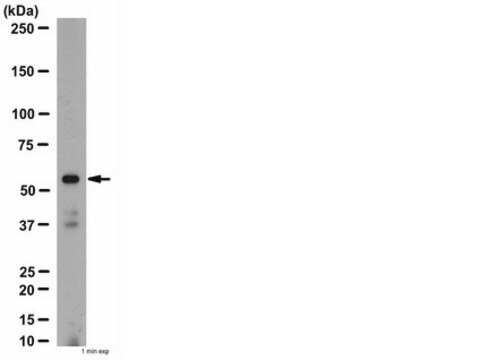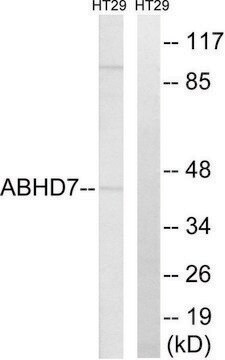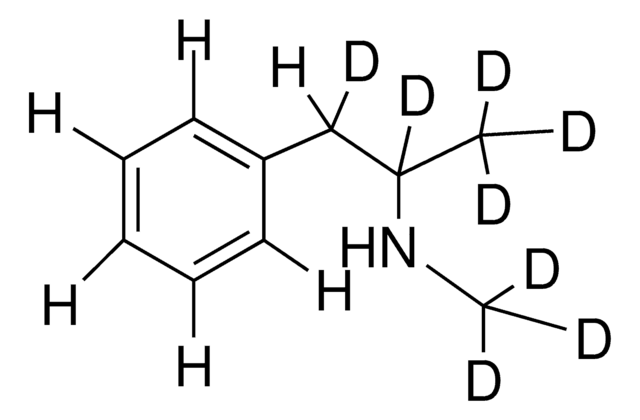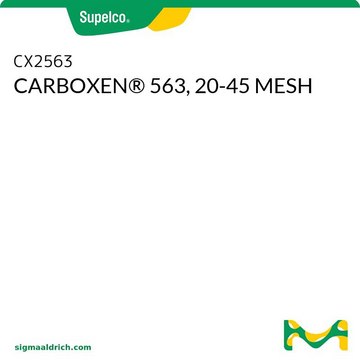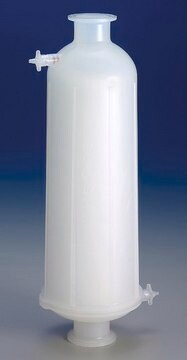HTS116M
ChemiSCREEN Human M3 Muscarinic Acetylcholine Receptor Membrane Preparation
Human M3 GPCR membrane preparation for Radioligand binding Assays & GTPγS binding.
Iniciar sesiónpara Ver la Fijación de precios por contrato y de la organización
About This Item
Código UNSPSC:
41106514
eCl@ss:
32161000
NACRES:
NA.84
Productos recomendados
origen biológico
human
Nivel de calidad
recombinante
expressed in Chem-1 cells
fabricante / nombre comercial
ChemiScreen
Chemicon®
técnicas
ligand binding assay: suitable (GTPγS)
radioligand binding assay (RLBA): suitable
Nº de acceso NCBI
Nº de acceso UniProt
Condiciones de envío
dry ice
Descripción general
Full-length human CHRM3 cDNA encoding M3
The muscarinic acetylcholine receptor (mAChR) family consists of five GPCRs that mediate some of the neurotransmission functions of acetylcholine in the CNS and the periphery. The M1, M3 and M5 receptors couple to Gq to mobilize intracellular calcium, whereas the M2 and M4 receptors couple to Gi/o to inhibit cAMP production (Caulfield and Birdsall, 1998). M3 is expressed prominently in smooth muscle, and plays a primary role in mediating mAChR agonist-induced contractility. Mice lacking M3 have dilated pupils, which indicates a role for M3 in regulating tone of the pupillary sphincter muscle. In addition, Msub3 plays a role in feeding, as indicated by the lean and hypophagic phenotype of M3-null mice (Wess, 2004). Chemicon′s M3 membrane preparations are crude membrane preparations made from our proprietary stable recombinant cell lines to ensure high-level of GPCR surface expression; thus, they are ideal HTS tools for screening of antagonists of M3 interactions with 4-DAMP. The membrane preparations exhibit a Kd of 0.72-1 nM for [3H]-4-DAMP. With 10 µg/well M3 Membrane Prep and 0.75 nM [3H]-4-DAMP, a greater than 4-fold signal-to-background ratio was obtained.
Aplicación
Human M3 GPCR membrane preparation for Radioligand binding Assays & GTPγS binding.
Radioligand binding assay and GTPγS binding.
Acciones bioquímicas o fisiológicas
GPCR Class: A
Protein Target: M3
Target Sub-Family: Acetylcholine (muscarinic)
Calidad
Signal:background and specific binding values obtained in a competition binding assay with varying amounts of M3 membrane prep:
| 20 µg/well | 10 µg/well | |
|---|---|---|
| Signal:Background | 5.17 | 5.10 |
| Specific Binding (cpm) | 1224 | 1030 |
SPECIFICATIONS: 1 unit = 10 µg
Bmax: 3.75 pmol/mg
Kd: 0.86 nM
Especificaciones
Inucbation Conditions
Membranes are mixed with radioactive ligand and unlabeled competitor (see Figures 1 and 2 for concentrations tested) in binding buffer in a nonbinding 96-well plate, and incubated for 1-2 h. Prior to filtration, a GF/C 96-well filter plate is coated with 0.33% polyethyleneimine for 30 min, then washed with 50mM HEPES, pH 7.4, 0.5% BSA. Binding reaction is transferred to the filter plate, and washed 3 times (1 mL per well per wash) with Wash Buffer. The plate is dried and counted.
Binding buffer: 50 mM Hepes, pH 7.4, 5 mM MgCl2, 1 mM CaCl2, 0.2% BSA, filtered and stored at 4°C
Radioligand: [3H]-4-DAMP (Perkin Elmer#:NET1040 )
Wash Buffer: 50 mM Hepes, pH 7.4, 500mM NaCl , 0.1% BSA, filtered and stored at 4°C.
One package contains enough membranes for at least 200 assays (units), where a unit is the amount of membrane that will yield greater than 4-fold signal:background with 3H labeled 4-DAMP at 0.75 nM
Membranes are mixed with radioactive ligand and unlabeled competitor (see Figures 1 and 2 for concentrations tested) in binding buffer in a nonbinding 96-well plate, and incubated for 1-2 h. Prior to filtration, a GF/C 96-well filter plate is coated with 0.33% polyethyleneimine for 30 min, then washed with 50mM HEPES, pH 7.4, 0.5% BSA. Binding reaction is transferred to the filter plate, and washed 3 times (1 mL per well per wash) with Wash Buffer. The plate is dried and counted.
Binding buffer: 50 mM Hepes, pH 7.4, 5 mM MgCl2, 1 mM CaCl2, 0.2% BSA, filtered and stored at 4°C
Radioligand: [3H]-4-DAMP (Perkin Elmer#:NET1040 )
Wash Buffer: 50 mM Hepes, pH 7.4, 500mM NaCl , 0.1% BSA, filtered and stored at 4°C.
One package contains enough membranes for at least 200 assays (units), where a unit is the amount of membrane that will yield greater than 4-fold signal:background with 3H labeled 4-DAMP at 0.75 nM
Forma física
Liquid in packaging buffer: 50 mM Tris pH 7.4, 10% glycerol and 1% BSA no preservatives.
Packaging method: Membranes protein were adjusted to 0.5 mg/ml in 1 mL packaging buffer, rapidly frozen, and stored at -80°C.
Packaging method: Membranes protein were adjusted to 0.5 mg/ml in 1 mL packaging buffer, rapidly frozen, and stored at -80°C.
Almacenamiento y estabilidad
Maintain frozen at -70°C for up to 2 years. Do not freeze and thaw.
Información legal
CHEMICON is a registered trademark of Merck KGaA, Darmstadt, Germany
Cláusula de descargo de responsabilidad
Unless otherwise stated in our catalog or other company documentation accompanying the product(s), our products are intended for research use only and are not to be used for any other purpose, which includes but is not limited to, unauthorized commercial uses, in vitro diagnostic uses, ex vivo or in vivo therapeutic uses or any type of consumption or application to humans or animals.
Código de clase de almacenamiento
12 - Non Combustible Liquids
Clase de riesgo para el agua (WGK)
WGK 2
Punto de inflamabilidad (°F)
Not applicable
Punto de inflamabilidad (°C)
Not applicable
Certificados de análisis (COA)
Busque Certificados de análisis (COA) introduciendo el número de lote del producto. Los números de lote se encuentran en la etiqueta del producto después de las palabras «Lot» o «Batch»
¿Ya tiene este producto?
Encuentre la documentación para los productos que ha comprado recientemente en la Biblioteca de documentos.
International Union of Pharmacology. XVII. Classification of muscarinic acetylcholine receptors.
M P Caulfield et al.
Pharmacological reviews, 50(2), 279-290 (1998-07-02)
Muscarinic acetylcholine receptor knockout mice: novel phenotypes and clinical implications.
Wess, Jurgen
Annual Review of Pharmacology and Toxicology, 44, 423-450 (2004)
Nuestro equipo de científicos tiene experiencia en todas las áreas de investigación: Ciencias de la vida, Ciencia de los materiales, Síntesis química, Cromatografía, Analítica y muchas otras.
Póngase en contacto con el Servicio técnico